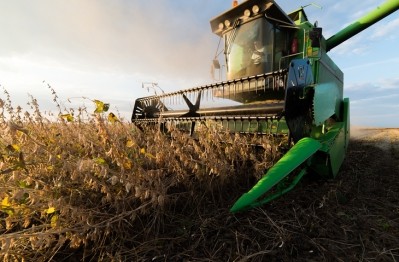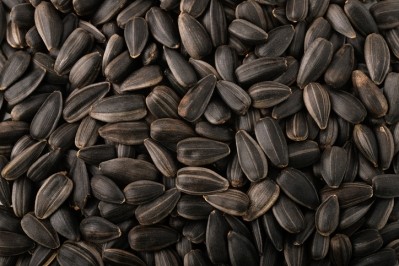Drought leads Argentina to buy US soybeans

Details of the country’s soybean imports, exports and production were included in a series of reports released Thursday by the US Department of Agriculture’s (USDA) Foreign Agriculture Service (FAS).
Argentina has turned to importing soybeans from the US for the first time in more than 20 years, according to report authors.
“Argentina is the world’s third-largest soybean producer and the number one soybean oil and meal exporter driven by a crush capacity estimated at 67m tons,” they said.
However, the 2018/19 marketing year is expected to see an increased production following the drought year, said the agricultural attaché in a report on oilseed production.
Sunflower planted areas also are predicted to increase although peanut acres should remain consistent.
Soybean production
A drought during summer months in Argentina reduced the soybean production by 16m tons to about 40m tons, the report authors said. However, some evaluations suggest that production may be closer to 36m tons down from a forecast production of 54m at the start of the planting season.
“Private local sources estimate production may be even lower,” they said. “In addition, producers in Argentina that can afford to are holding a significant inventory of beans on speculation of higher prices.”
The local crushing industry is anticipated to import more soybeans than it has previously done to support normal processing levels, they said. Processing plants have been operating at about 70% capacity but could see an additional reduction in operating capacity.
Soybeans account for about 60% of the crop area in Argentina, said the attaché. In 2018/19, about 19m hectares are expected to be planted – an expansion of almost 3% from 2017/18.
However, soy margins continue to be limited by the cost of weed control measures and may be reducing the expansion of first crop soybean planting in favor of corn, he said. Second crop soybeans are expected to grow by 15%.
“During the 2017/18 season Argentina experienced a combination of drought-level moisture and high temperatures that dramatically reduced production and yields,” the attaché said. “Overall, the national average yield estimated at 2.29 tons was 26% below last season’s average.”
The estimated drought-related losses are calculated to be about $3.4bn, he said.
Soybean crush in 2018/19 is anticipated to increase by about 3%, he said. The majority of meal is exported, however domestic meal use in feed is supporting an expanding swine, poultry and cattle production industry.
“Feed, waste and seed consumption of soybeans for 2018/2019 is forecast at 5.25m tons, up 3% from post’s 2017/2018 estimate of 5.1m tons,” he said. “This increase is in line with a historical trend and a rise in poultry, pork and beef production.”
Oilseed production
Sunflower production was about 3.4m tons, and was relatively unaffected by the drought, the attaché said.
In 2018/19 the area planted in sunflowers is expected to increase to 1.75m hectares, he said.
“Practically all sunflower seed is crushed for oil and meal, with a portion (2%) exported for confectionary use and a minor demand by the livestock sector for sunflower meal pellets,” he said. “[In] 2018/2019 sunflower meal consumption (all for feed) is forecast to increase to 610,000 tons.”
However, the peanut crop did see a reduction in 2017/18 of about 30%, he said. Planting in 2018/19 is not expected to increase.
Export and import market
Soybean imports in the 2017/18 marketing year (MY) may range from 4 to 5.5m tons or about 10-12% of domestic crush, the report authors said. Argentina imported about 1.3m tons of soybeans in the first third of the marketing year with imports in March reaching a “historic high” at 928,000 tons.
Initially, the majority of imported soybeans originated in Paraguay, with the remainder coming from Brazil, they said. The country often imports beans from Paraguay as they have a higher protein content and can be used to improve meal for export.
“In April 2018, US private exporters reported to USDA contracts for shipments totaling 490,000 tons of soybeans to Argentina for delivery in the 2017/18 and 2018/19 marketing years with import sales possible in the near future of up to 1 million tons, depending on market conditions,” they said.
One potential challenge to additional imports from the US stems from differences in the approvals of biotech traits in soybeans, the report authors said.
“One event, MON87708-9, Genuity Roundup Ready 2 Xtend, is commercialized in the US and not approved in Argentina,” they said. “Sources within the Argentine Government relate that this event may be approved for feed, food and processing by the fall.”
Additionally, a resolution released by the Ministry of Agro-Industry in May established a four-year authorization for imported biotech products intended to be used as raw material for animal feed, they added.
Exports of whole soybeans are anticipated to recover to about 7.3m tons in 2018/19, the attaché said. exports dropped to 3.5m the previous marketing year.
“Argentina is the world’s largest soybean meal and oil exporter due to its large crush capacity, a sophisticated value-added sector and a differential export tax (higher on beans than products) that bolsters soybean processing,” he said. “Post estimates 2018/2019 soybean oil and meal exports to increase by 2% to 5.4 and 30.6m tons, respectively.”
The majority of the soymeal exports are destined for the EU followed by markets in Southeast Asia, he added.









